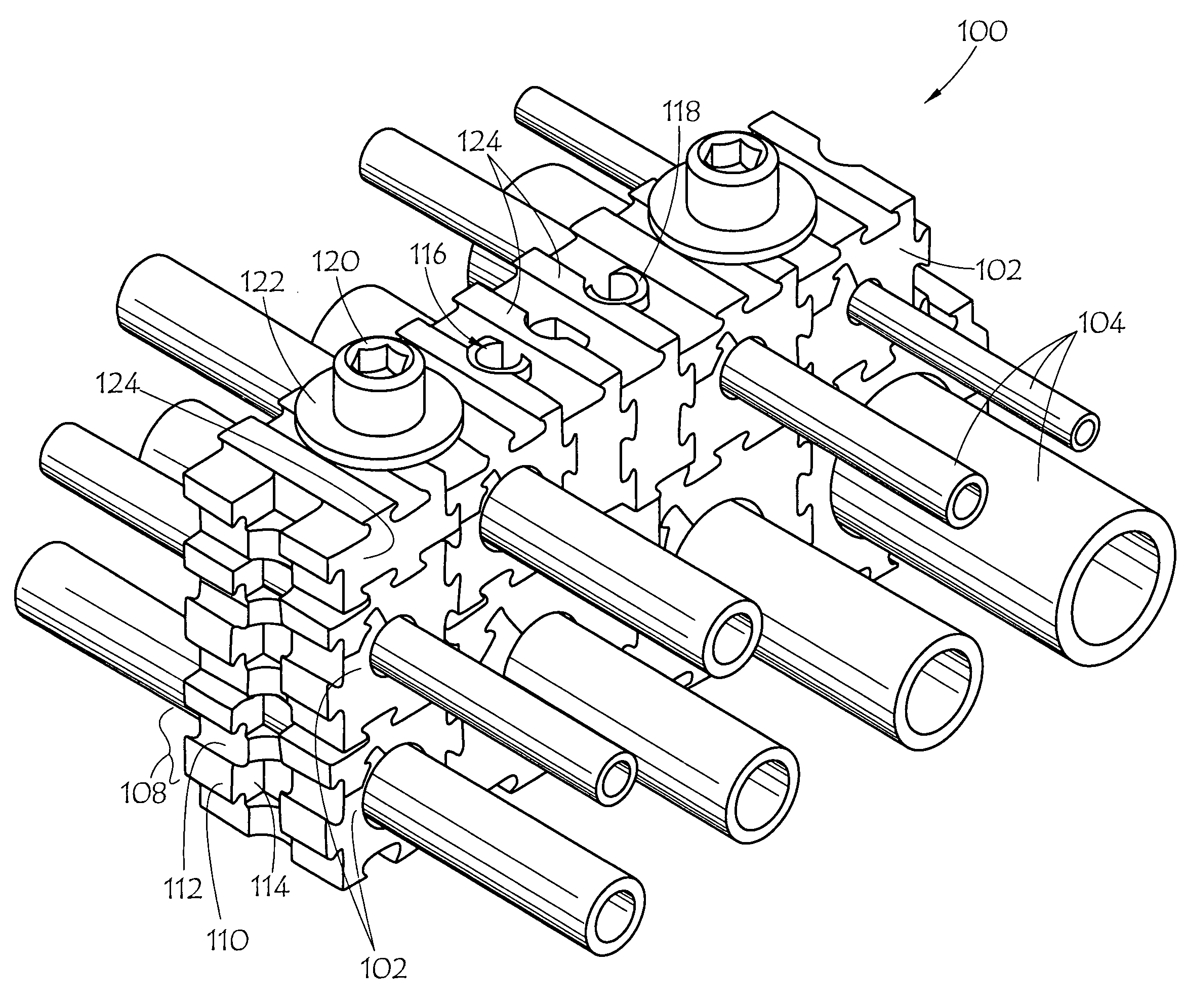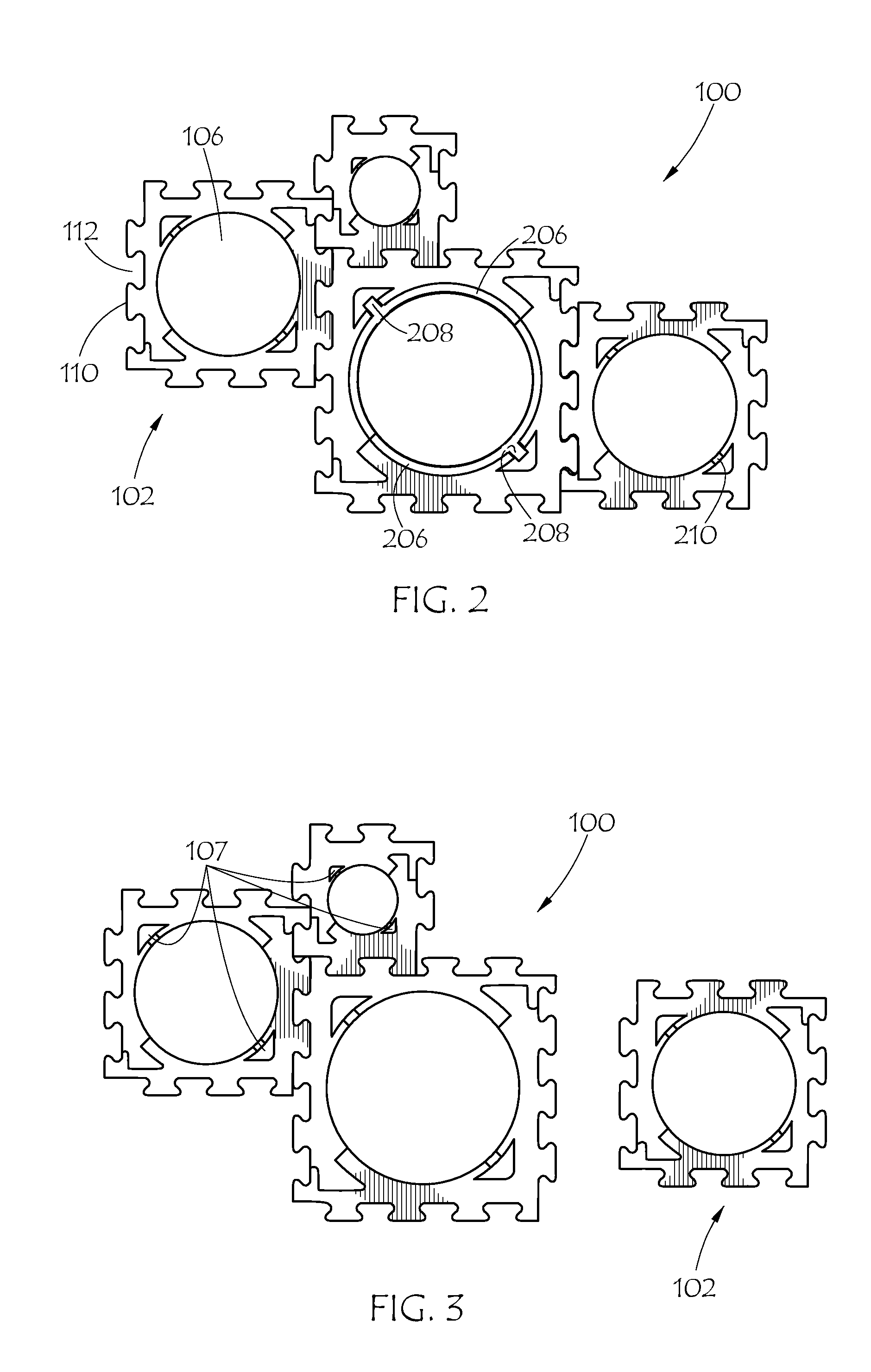Modular support, assemblies, methods and systems
a module and assembly technology, applied in the field of modules, can solve the problems of affecting the assembly, affecting the assembly, and unable to detect the fault, so as to reduce the number of parts and cost, and the object is organized better
- Summary
- Abstract
- Description
- Claims
- Application Information
AI Technical Summary
Benefits of technology
Problems solved by technology
Method used
Image
Examples
embodiment 100
[0031]Referring to FIG. 1, embodiment 100 of the present invention is shown supporting a varying number and sizes of elongated, generally cylindrical objects 104. In various embodiments of the present invention, the cylindrical objects may comprise fluid conduits. However, it should be understood that the present assemblies can receive, support, transport, and store objects having virtually any cross section, including square, elliptical, oblong, or oval-shaped cross sections as well as objects of virtually any type or size including airplane fuselages or portions thereof, machinery parts, construction components, medical, sports, or other equipment, large oil pipe lines, transport vessels, etc.
[0032]Turning to FIGS. 2-4, in various embodiments of the present invention, the fluid conduits may comprise hydraulic hose, pipe and tube. A bundle of various cross sections of conduit is supported by modular support assembly 100 comprised of modules 102. Modules 102 may comprise varying siz...
embodiment 602
[0050]Module embodiment 602, may also make use of an insert, such as insert 206, discussed above. Preferably the use of such an insert allows a limited number of modules sizes to be used with a greater number of conduit sizes. Reliefs 607 also facilitate providing a more constant thickness to module portions 603. Reliefs 607 preferably each define a slot to receive an insert tab, such as in a snap-fit manner.
[0051]Hence, in module 602, module portions 603 have a relatively constant thickness throughout, which should facilitate molding of portions 603, as molded parts will preferably cool more evenly and will not be as likely to “'sink” in thick areas.
[0052]As mentioned previously, historically, other support mechanisms require the removal of all inhibiting support blocks in order to access a conduit housed by a surrounded support block. An advantage provided by the modular support assembly 100 is that simple and easy removal of a conduit 104 can be achieved, even for those conduits ...
PUM
 Login to View More
Login to View More Abstract
Description
Claims
Application Information
 Login to View More
Login to View More - R&D
- Intellectual Property
- Life Sciences
- Materials
- Tech Scout
- Unparalleled Data Quality
- Higher Quality Content
- 60% Fewer Hallucinations
Browse by: Latest US Patents, China's latest patents, Technical Efficacy Thesaurus, Application Domain, Technology Topic, Popular Technical Reports.
© 2025 PatSnap. All rights reserved.Legal|Privacy policy|Modern Slavery Act Transparency Statement|Sitemap|About US| Contact US: help@patsnap.com



